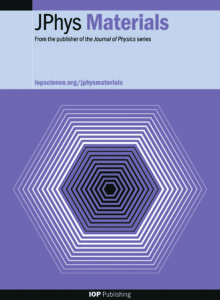JPhys Materials特刊征稿|聚焦神经形态计算的材料和设备

特刊详情
客座编辑
- 杨玉超,北京大学
- 唐建石,清华大学
- 朱小健,中国科学院宁波材料技术与工程研究所
- Yiyang Li,美国密歇根大学
主题范围
- Material synthesis and characterizations for neuromorphic computing
- Bio-inspired nanoionic materials and devices for neuromorphic computing
- High-performance neuromorphic computing based on phase-transition materials
- Energy-efficient neuromorphic devices designed by spintronic materials
- In-sensor neuromorphic computing using optoelectronic materials
- Flexible neuromorphic devices enabled by organic-inorganic hybrid materials
投稿流程
特刊文章与JPhys Materials期刊常规文章遵循相同的审稿流程和内容标准,并采用同样的投稿模式。
有关准备文章及投稿的详细信息,可以参阅IOPscience页面的作者指南。
作者可登入期刊主页进行在线投稿,先选择“文章类型”,然后在“选择特刊”的下拉框中选择“Focus issue on Materials and Devices for Neuromorphic Computing”。
投稿截止日期:2023年12月15日。
期刊介绍

- 2022年影响因子:4.8 Citescore:9.8
- JPhys Materials(JPMATER)是一本新出版的开放获取期刊,涵盖材料研究中最重要和最激动人心的进展,着重关注跨学科和多学科研究,包括:生物和生物医学材料;碳材料;电子材料;能源和环境材料;玻璃和非晶态材料;磁性材料;金属和合金;超材料;纳米;有机材料;光子材料;聚合物和有机化合物;半导体;智能材料;软物质;超导体;表面、界面和薄膜等。
